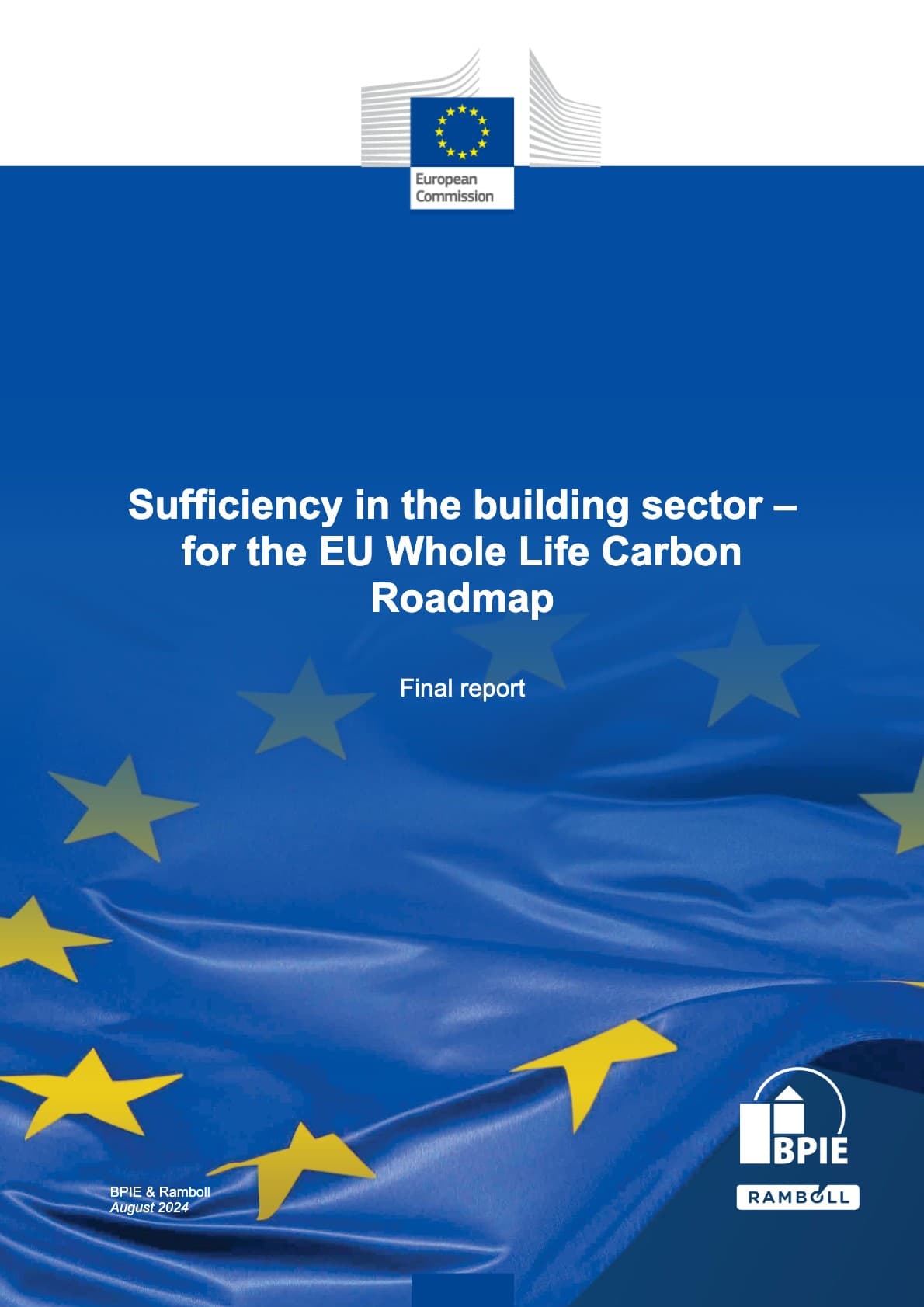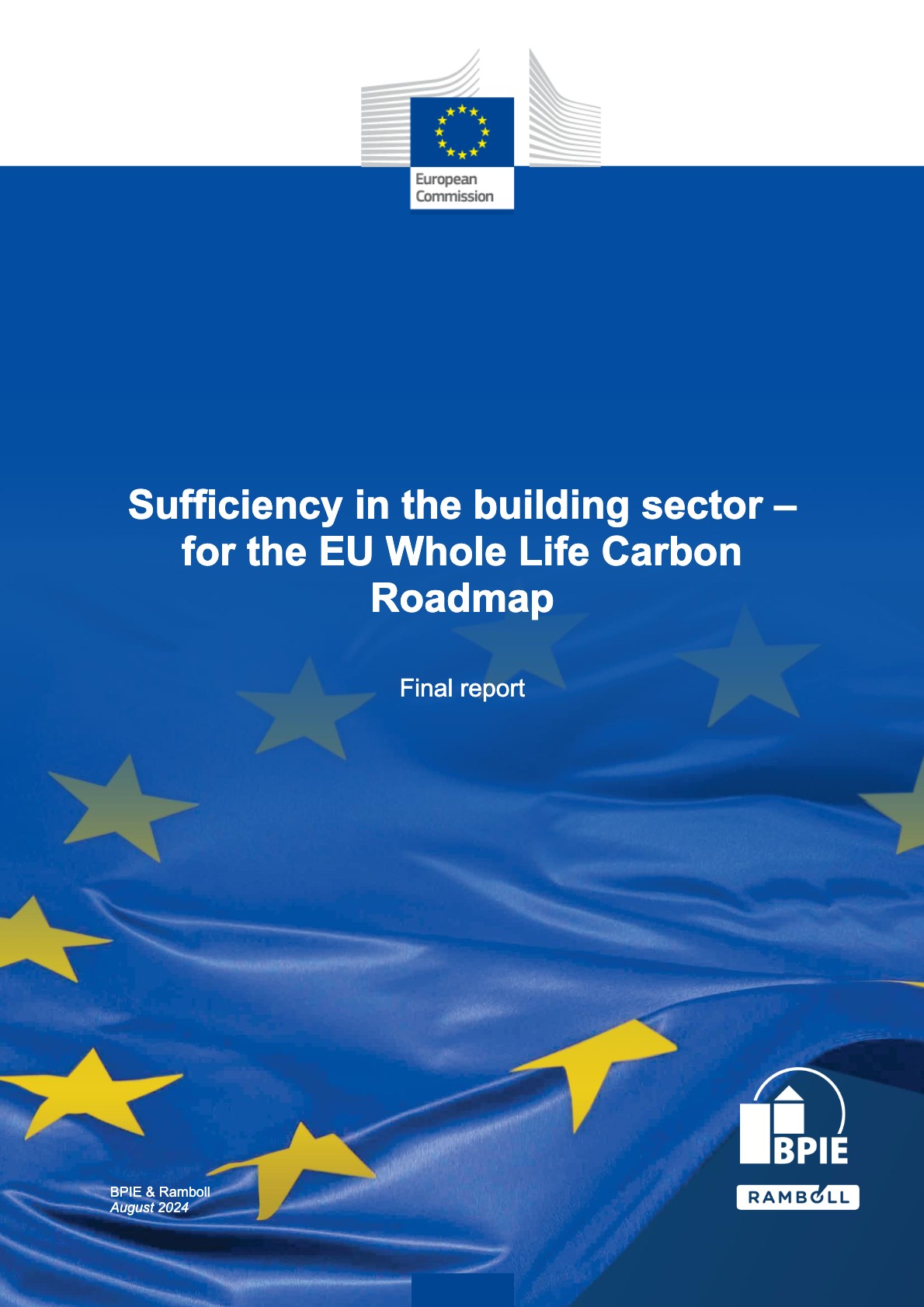🌍Context and Overview
The report titled "Sufficiency in the building sector – for the EU Whole Life Carbon Roadmap" was prepared by BPIE and Ramboll for the European Commission's Directorate-General for Environment. It focuses on the pressing need for sustainability in the building sector, aiming to address the intertwined crises of climate change, environmental degradation, and housing shortages through sufficiency measures.
🏗️Key Findings
Recent research indicates that new construction is emerging as a significant emission hotspot alongside operational emissions. The concept of sufficiency emphasizes the importance of using existing buildings before resorting to new construction. By leveraging, managing, and redistributing current built spaces, the report highlights the potential to reduce material and energy demands while addressing housing shortages and environmental concerns. For instance, repurposing offices into residential units can significantly cut emissions and alleviate the pressure on land resources.
🏢Quantitative Impact
The analysis of five case studies reveals substantial potential for utilizing vacant and underused spaces. Estimates suggest that Belgium could avoid 19,220 m² of new construction, while France and Germany could avoid 20,197,763 m² and 23,526,633 m², respectively. These figures illustrate the considerable opportunity for reducing greenhouse gas emissions through sufficiency measures, which could save millions of tonnes of CO₂ annually.
🔍Opportunities for Implementation
The report identifies several opportunities for promoting sufficiency in the building sector, such as incentivizing the use of vacant spaces and integrating sufficiency considerations into various policy objectives. The analysis indicates that adaptation projects are often less expensive and quicker to execute than new constructions. Furthermore, better data availability on vacant buildings is essential for policymakers to target interventions effectively.
⚖️Challenges Ahead
Implementing sufficiency principles requires capacity within public administrations, including dedicated teams for project management and information dissemination. Current taxation regimes and tenancy regulations may deter property owners from adopting sufficiency measures. Initial costs for renovations can also pose barriers, necessitating solutions to make the financial aspects more attractive.
📈Recommendations for Action
The report emphasizes the need for a comprehensive understanding of available vacant spaces, alongside the development of assessment methods to quantify the benefits of sufficiency measures. There is a strong demand for collaboration among stakeholders to share best practices and innovate solutions tailored to local contexts. Moreover, addressing regulatory and financial barriers is critical to fostering a more sustainable building sector.
🏡Conclusion
Sufficiency measures present a viable path towards sustainable housing in Europe, offering numerous social, economic, and environmental benefits. By prioritizing the effective use of existing buildings, the European Union can make significant strides in reducing emissions and alleviating housing shortages, ultimately contributing to a more sustainable future.

